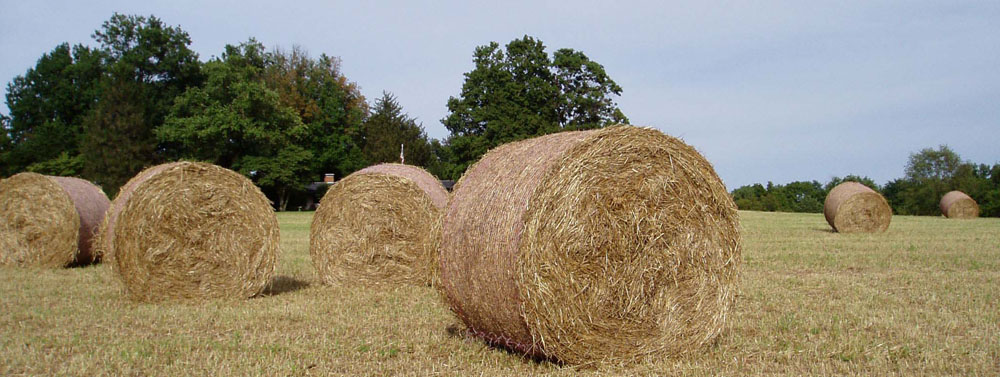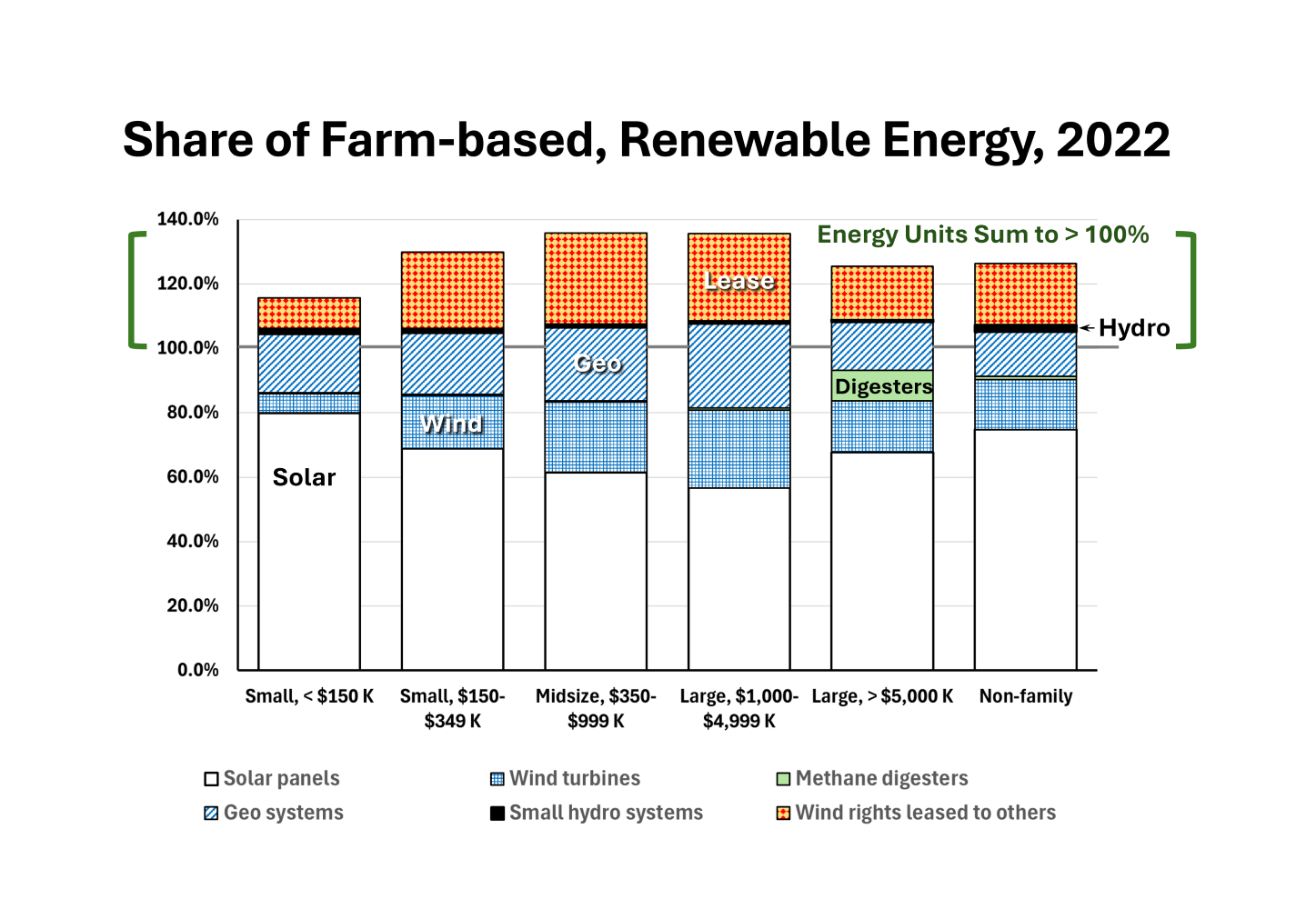Eight Percent of US Farms Are Associated with Renewable Energy
The farm-based renewable energy information in the 2022 Census of Agriculture is informative, but the data available is rather course. This Census data is not available anywhere but in the 2022 Census of Agriculture. It does not, however, include capacities or dollar values. Therefore, only gentle inferences can be made. The six categories of 2022 on-farm renewable energy activities presented in the Census are solar, wind, geothermal (geo), small-scale hydroelectric (hydro), methane or anaerobic digesters (digesters), and wind rights leased to others.
This presentation of the Census data from the 2022 Farm Typology compares the six different categories within each Gross Cash Farm Income (GCFI) category. Recall that GCFI included farm producer’s sales of crops and livestock, fees for delivering commodities under production contracts, government payments, and farm-related income. It was also clear that the smallest category of farms, those with a GCFI level below $150,000 in sales, had 80 percent of the farms. Without tabulating the distribution of energy within each GCFI level, the bias from number of farms per category shows up and hides the more useful information.
The 153,101 farms reporting renewable energy activity are 8.1 percent of the 1,900,487 farms in the 2022 Census database. The activity presented here focuses on the 153,000 energy activity reporting farms.
The most notable observation is that farms can have more than one source of renewable energy on their farm. If only one energy production category existed per farm, the total share of all the categories would sum to 100 percent. Since all categories sum to greater than 100 percent, some farms have more than one type of on-farm energy activity.
Solar energy occurs more frequently in the small, less than $150 K GCFI farms. Wind and geothermal energy system frequency increases as farms get larger up to the large, $1,000 to $4,999 K GCFI farms. The same trend is upward in the first for categories, moving left to right, for wind rights leased to others.
The largest farm category, over $5,000 K GCFI, is where the most on-farm anaerobic digesters occur. These have been popular on large dairy farms.
Small scale hydroelectric systems are fewer than other energy systems. When compared across the typology income categories, they are the smallest in number. They make up 6 percent of the small on-farm energy units and nearly 8 percent of the non-family farm category.
There are many data qualifiers missing like whether they are residential or utility-scale systems. There is no information about power generation capacities, or total revenue generated from these systems. Still, it is useful to see that for the 8 percent of farms with renewable energy generation activities, some of them have engaged in more than one activity. The GCFI typology defining categories do play a role in the type of activity in which farms are engaging.



Comments
Eight Percent of US Farms Are Associated with Renewable Energy — No Comments
HTML tags allowed in your comment: <a href="" title=""> <abbr title=""> <acronym title=""> <b> <blockquote cite=""> <cite> <code> <del datetime=""> <em> <i> <q cite=""> <s> <strike> <strong>